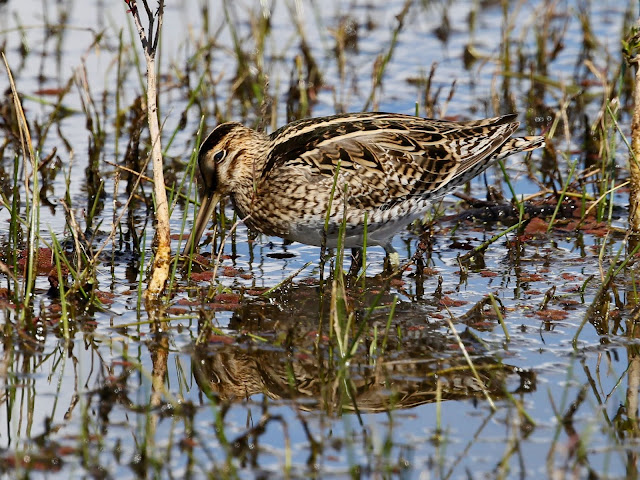For a long time I have been trying without much success to get some photos of Reed-Warblers - more often heard than seen - until a recent chance encounter with a bird feeding at the Byron Integrated Water Management Reserve (Byron Wetlands for short). The bird was initially in a tangle of shrubs above water with a dense floating cover of azolla(1), its presence given away by an incessant/repeated sharp call ‘tchuk, tchuk’ and not the more familiar rich and powerful summer calls that are reflected in the names Clamorous(2) and Warbler. I waited with camera ready hoping it would show itself. Fortunately the bird moved to the edge of the dense shrubs and became engrossed in foraging for insect larvae in the azolla.
Please click on photos to enlarge.
The first two photos show the usual Reed-Warbler photography challenges with at best the bird in a tangle of vegetation partially obscured and with shadows across the bird.
The remaining photos were captured when the bird came out into the open and became very focused on finding insect larvae in the azolla with odd breaks to check on the nearby photographer. Two of the photos show the bird with an insect larvae in its bill.
Macleod Morass in Bairnsdale is a good place to look for Reed-Warblers however in SE Australia they are summer breeding migrants arriving August – October and departing March – April. Some birds may overwinter, however as they are unlikely to be calling then, finding them without a call to guide you would be a matter of luck.
(1) Azolla (from Wikipedia) is a species of aquatic fern (family Salviniaceae) extremely reduced in form and is highly specialised, looking nothing like other typical ferns but more resembling duckweed or some mosses.
(2) Clamorous Reed-Warbler was the widely used common name for this bird until the recent adoption of Australian Reed-Warbler.





















